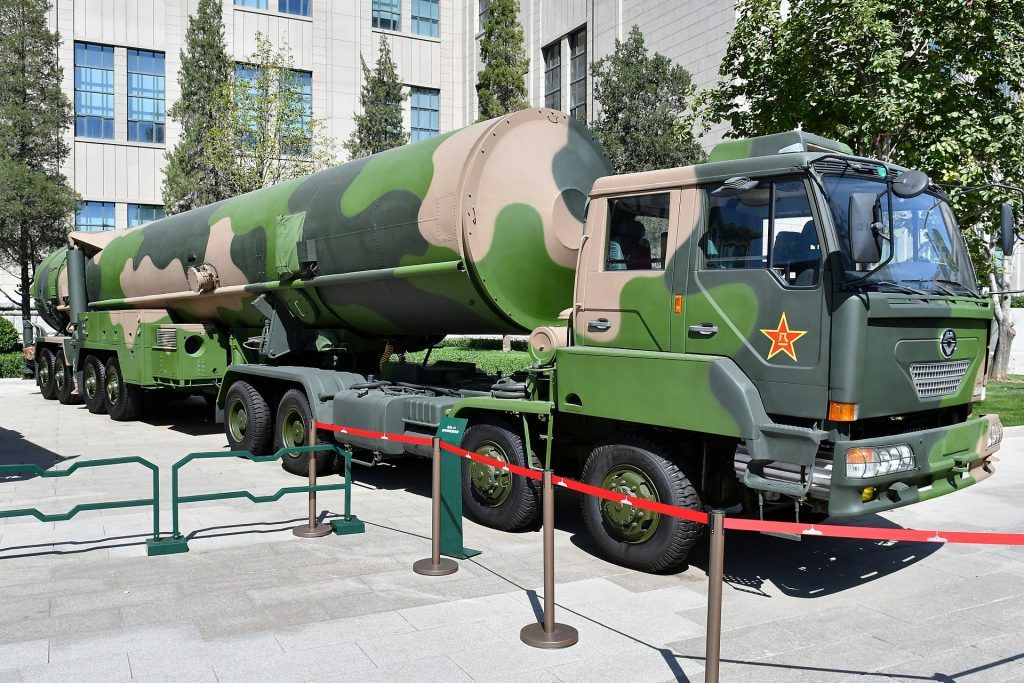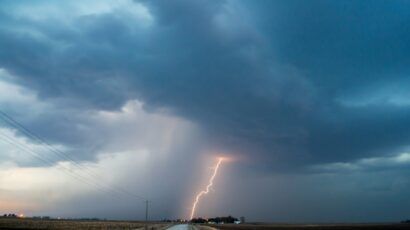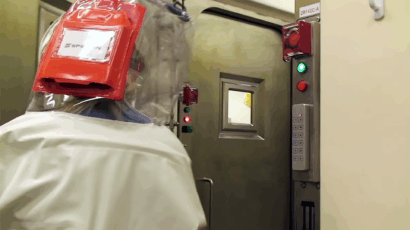Trilateral arms control initiative: A Chinese perspective
By Wu Riqiang | September 4, 2019
 China's DF-31 intercontinental ballistic missile. Credit Creative Commons
China's DF-31 intercontinental ballistic missile. Credit Creative Commons
On April 10, US Secretary of State Mike Pompeo told the Senate Foreign Relations Committee that the Trump administration wanted to include China in the New START treaty. New START is a bilateral arms control agreement between Russia and the United States that caps the number of deployed strategic nuclear warheads at 1,550 each. Later, it was reported that President Trump ordered his administration to prepare a push for more ambitious arms control agreements with Russia and China. Unsurprisingly, China’s response was not enthusiastic. The spokesperson of China’s Foreign Ministry said China “will not participate in any negotiation for a trilateral nuclear disarmament agreement.”
Traditionally, nuclear arms control agreements have involved the United States and Russia, allowing both countries to steadily decrease the size of nuclear arsenals. Washington thinks this traditional template governing arms control is old Cold War thinking, and a new trilateral approach to arms control would be a more productive strategy moving forward. New strategy aside, Washington’s new approach to arms control seems odd.
China has a much smaller nuclear arsenal than either Russia or the United States. The Chinese nuclear arsenal is estimated to hold around 290 warheads, while US and Russian stockpiles number 3,800 and 4,350, respectively. Chinese warheads are also kept on off-alert status during peacetime, a practice that the United States and Russia do not employ. Per agreed upon terms in the New START treaty, China’s off-alert practices make the number of active warheads in the Chinese arsenal almost zero. As Gregory Kulacki, China project manager and senior analyst at Union of Concerned Scientists, correctly pointed out, Pompeo’s idea of creating a trilateral arms control agreement would “open the door to deep US nuclear cuts (or large Chinese increases).”
China’s position on nuclear disarmament has not changed for many years. Since the Chinese nuclear force is “an order-of-magnitude” smaller than that of the United States and Russia, China believes that “countries with the largest nuclear arsenals should continue to take the lead in making drastic and substantive reductions in their nuclear weapons. … When conditions are ripe, other nuclear-weapon states should also join the multilateral negotiations on nuclear disarmament.”
This does not mean that there is no value in working trilaterally to reduce global nuclear threats until the two nuclear superpowers have deeply reduced their arsenals. In recent years, there is evidence of a renewed nuclear arms race among major nuclear powers. The United States has adopted an ambitious missile defense policy, which adopts a space-based sensor layer, explores the possibility of a space-based missile intercept layer, and emphasizes the means for boost-phase intercept. This behavior is considered to be destabilizing as it signals to other nuclear weapons states that their nuclear weapons may be less effective against US targets, and that they should increase the effectiveness of their nuclear arsenals. Russia has demonstrated several new types of nuclear weapons: the Poseidon underwater drone, the nuclear-powered cruise missile, the Kinzhal high-precision hypersonic aircraft missile, and the Avangard hypersonic glider. China has also modernized and slightly expanded its nuclear arsenal.
This behavior has heightened suspicions among the nuclear powers. Beijing and Moscow suspect that Washington is pursuing invulnerability. In the announcement of the 2019 Missile Defense Review (MDR), President Donald Trump said that the goal of the US missile defense system is to “detect and destroy any missile launched against the United States—anywhere, anytime, anyplace.” Some American strategists believe that Russia has a strategy of “escalate to de-escalate”—meaning Russia might escalate future conflict to nuclear war to force negotiations. Washington also fears that armed with a new generation of nuclear forces, Beijing will adopt a more aggressive nuclear strategy.
The pressing matter of the moment is to avoid an arms race and reduce the risk of nuclear war. Although the chance of a formal trilateral arms control treaty is extremely low, some reciprocal unilateral measures can be taken to build confidence and open the door for better understanding and communication, paving the path for the future of arms control.
Any trilateral talks should begin with an acknowledgment of mutual vulnerability so China, Russia, and the United States all understand the balance of power and can begin to work together. The purpose of nuclear arms control is to maintain strategic stability between major nuclear powers, not to solidify anyone’s global dominance. The three sides could then issue a joint political statement, recognizing President Reagan’s well-known saying: “a nuclear war cannot be won and (therefore) must never be fought.”
Strategic offensive and defensive weapons must be considered simultaneously. Washington’s long-standing policy is that any limits on missile defense development and deployment are not acceptable. However, the United States needs to understand that the unpredictable and unlimited future of US missile defense triggers Russian and Chinese build-up and ultimately makes the United States less safe. Although a rebirth of the Anti-Ballistic Missile Treaty is unlikely, all sides need to reach a common understanding of mutual restraints for both strategic offensive and defensive weapons.
For many years, China has proposed a multilateral no-first-use treaty, which has been repeatedly dismissed. In September 1994, China and Russia issued a joint statement on bilateral no first use. Although many people both inside and outside the US government pushed President Obama to adopt a no-first-use policy, he failed to do so before he left office. Work toward a trilateral no-first-use statement could build confidence and reduce the role of nuclear weapons in national security policy, and therefore would be a worthwhile goal for trilateral arms control.
Trilateral work could also be amplified through country-specific supportive action. The United States and Russia need to continue their bilateral disarmament process. Despite significant reductions from the peak of the Cold War, Washington and Moscow still hold more than 90 percent of the world’s nuclear weapons. President Obama said in Berlin that the US deployed strategic nuclear weapons could be reduced by up to one-third without threatening the security of America and its allies. Further reductions should include all types of nuclear warheads: strategic and nonstrategic, deployed and nondeployed.
China should significantly improve its nuclear transparency. China’s transparency policy emphasizes the importance of transparency of intentions and the role of mutual trust. In recent years, China has greatly improved its military transparency, but it is still more secretive of its military information than other powers. China’s lack of transparency stems from its political and cultural traditions rather than security concerns; this is why China could substantially improve nuclear transparency without compromising national security.
All sides need to agree upon new verification methods and counting rules to smooth the verification process for compliance with future arms control agreements. Unlike the United States and Russia, China’s nuclear deterrence relies on concealment and mobility. The on-site inspection practices adopted for the US-Russian arms control treaties will undermine China’s nuclear deterrent and therefore make Chinese compliance and cooperation impossible. In peacetime, most of China’s nuclear warheads are separated from missiles and kept in special bases. How to develop a counting rule considering this practice in any possible trilateral arms control treaty is a problem that would need to be solved.
None of the measures listed above are easy to do, and given the current political climate, they are unlikely to be realized. However, if national leaders are serious about trilateral nuclear arms control and reducing the risk of a nuclear arms race and nuclear use, these are all powerful steps in the right direction.
Together, we make the world safer.
The Bulletin elevates expert voices above the noise. But as an independent nonprofit organization, our operations depend on the support of readers like you. Help us continue to deliver quality journalism that holds leaders accountable. Your support of our work at any level is important. In return, we promise our coverage will be understandable, influential, vigilant, solution-oriented, and fair-minded. Together we can make a difference.
Keywords: China, New START, Russia, United States, arms control, no first use
Topics: Analysis, Nuclear Weapons















